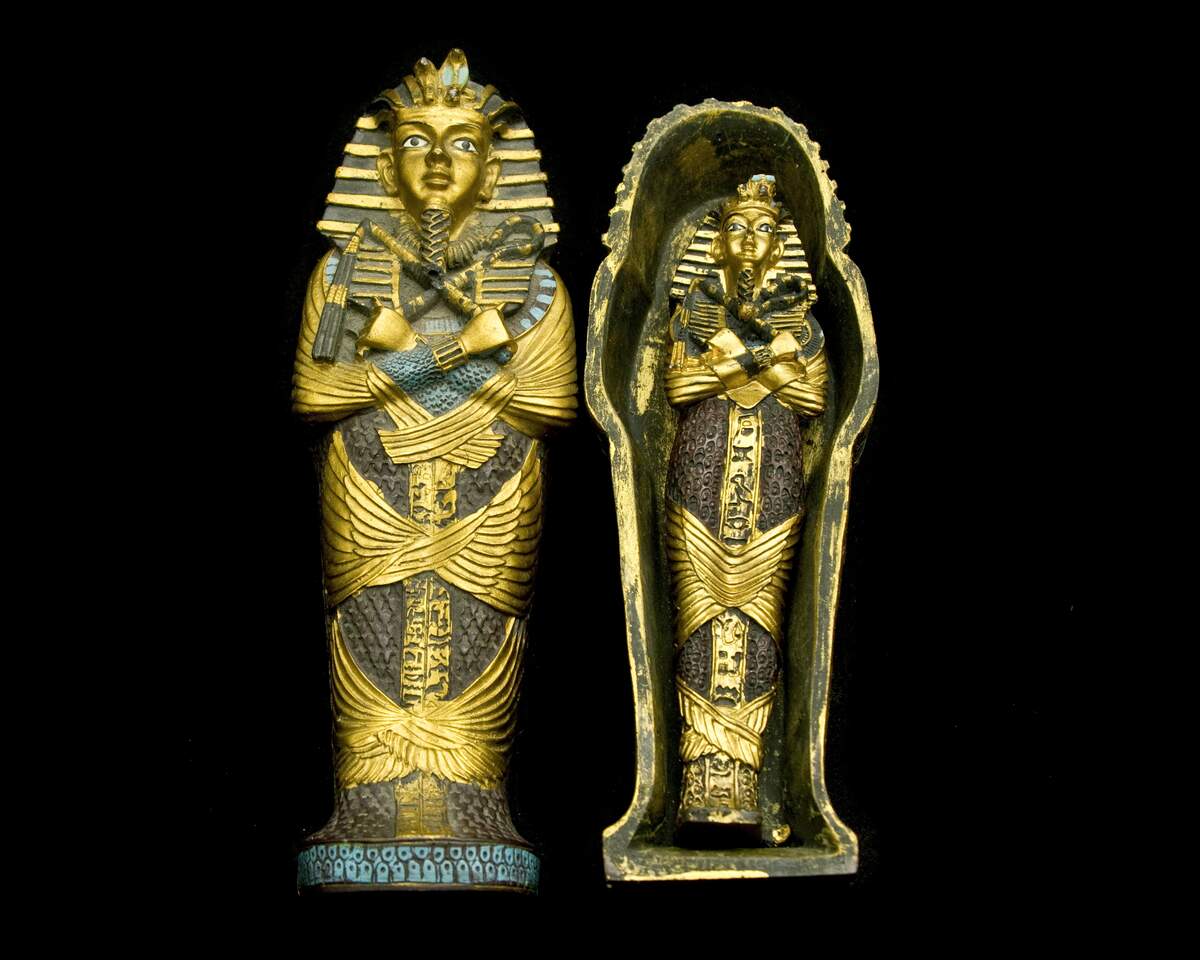

King Tut Day
Observed
annually on November 4th
Dates
Tags
Famous People & Celebrities
History & Culture
Men
Hashtags
Sources
King Tut Day celebrates the day that King Tut's tomb was discovered in Egypt's Valley of the Kings by British archaeologist Howard Carter, on November 4, 1922. Carter had first arrived in Egypt in 1891, but didn't start an in-depth search for King Tut's tomb until after World War I. One reason King Tut's tomb hadn't yet been found was because the steps to it had been covered and hidden with debris from the close-by tomb of Ramses VI. After discovering Tut's tomb, Carter and another archaeologist, Lord Carnarvon, entered its interior chambers on November 26, 1922, to find it remarkably intact. The four-room tomb was combed by Carter, who found thousands of objects, including a stone sarcophagus that contained three coffins inside of each other, with King Tut's mummy on the inside of the last coffin—a coffin made of gold. Most artifacts found in the excavation are now stored in the Cairo Museum, although Tut's mummified body is still in his tomb.
King Tut, whose full name was Tutankhamun, was the 12th pharaoh of the 18th Egyptian dynasty, and reigned from roughly 1332 to 1323 BCE, assuming power at the age of nine. His original name was Tutankhaten, which means "the living image of Aten," but he changed it to Tutankhamun after assuming the throne, which means "the living image of Amun." In Egyptian mythology "Aten" was the sun disk god. "Amun" was a major god, sometimes called "King of the Gods". Tut's father was Akhenaten, and just as his son was named after Aten, he instituted a monotheistic religion where no gods could be worshiped but the sun disk, Aten. During Tut's father's rule, focus was put on the religious transition, relegating foreign and other domestic affairs to the rear. After a 17 year rule his son took over the throne. Akhenaten's religious decrees were changed, and King Tut worked to reverse his father's policies and restore order, in a hope that the god's would once again smile on Egypt.
It is not definitively known what led to Tut's early death. Research suggests that he probably died from gangrene after suffering a broken leg. A 2010 study found that he had malaria and was disabled, which may have meant that he had to walk with a cane and was more susceptible to falls. There was another long-held theory that political rivals had killed him by striking him in the head, but a body scan in 2006 revealed that the damage to Tut's skull happened after his death.
How to Observe King Tut Day
The best way to celebrate the day is to visit King Tut's tomb, where his mummified body is still kept. The next best thing you could visit is the Cairo Museum, which houses many Egyptian artifacts, including many pertaining to King Tut. Since it may be difficult to take a trip to Egypt, your best bet may be to explore online materials, including photographs of the tomb, or to read a book about King Tut.





















